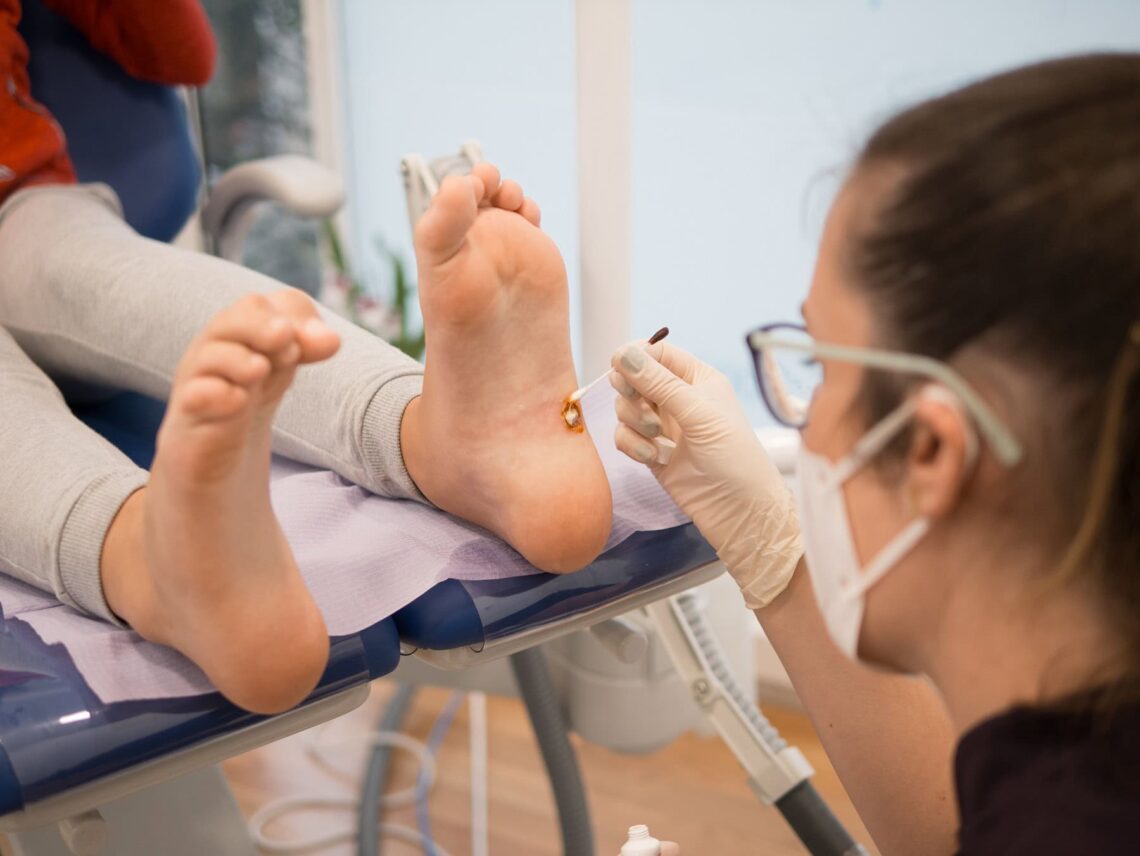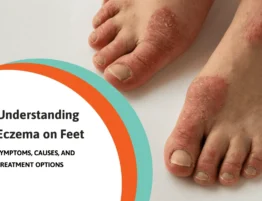
Children and Plantar Warts
Plantar warts (simply: warts on the feet) are a very common issue for people of all ages. It’s estimated that 7-10% of the US population has some type of wart infection. It’s especially prevalent in children, with approximately 10-20% of children in the US affected. These are most common from the ages of 12-16 and girls are affected more frequently than boys.
Although these skin lesions are typically harmless, they can cause pain and discomfort as well as being unsightly. They’re also highly contagious and can easily be spread to others through both direct and indirect contact. This means that warts can be spread either by coming in contact with someone’s wart with your bare skin or by having bare skin contact with an object recently touched by someone else’s wart (ie: shower floor, socks, towels, etc.).
Diagnosis is usually done by physical examination. This typically involves trimming of the wart to remove any hard outer callus and looking for the telltale signs of wart infection. These symptoms can be subtle, and proper diagnosis should always be done by a qualified specialist.
Here are some common causes and risk factors for plantar warts in children:
- Direct Contact: The HPV virus that causes the warts is contagious and spreads through direct contact with an infected person or surface. Children can contract the virus by walking barefoot in damp, warm environments like public swimming pools, locker rooms, or communal showers.
- Weakened Immune System: Children that have weaker immune systems typically take immuno suppressive medications, and that is why are more likely to develop warts.
- Cuts or Abrasions: The infection often enter the skin through tiny cuts, scrapes, or abrasions on the feet. Children who have minor foot injuries or whose skin is compromised in some way may be at higher risk.
- Walking Barefoot: Children who frequently walk barefoot in areas where the virus is present are more likely to come into contact with the HPV strain responsible.
- Personal Hygiene: Lack of proper foot hygiene, such as not washing feet regularly, can contribute to the spread of the virus.
It’s essential for parents and caregivers to educate children about the importance of foot hygiene, avoiding walking barefoot in public areas, and wearing flip-flops or other protective footwear in communal spaces to reduce the risk of contracting warts.
Treating Plantar Warts
Once the diagnosis of has been made, treatment can be started. Success rates for wart treatments in the adult population are often very low with cure rates for an initial treatment ranging from 5-10%. Subsequent treatments are typically needed. Success rates for initial treatments for children are much better, typically in the 50-60% success range. Various treatment options exist including over the counter topicals, laser therapies, surgical excision, as well as more aggressive topical therapies that are applied under a doctor’s supervision. The best treatment option can vary from person to person depending on age, severity, and location on the foot.
Regardless of which treatment is used, prevention of spread is always very important to avoid re-infection and to avoid passing it along to someone else. My recommendations to prevent spreading warts include:
- Always wear shower shoes in public locker rooms and changing rooms. This includes anyone with warts but also anyone without them.
- If your child has warts they should not share socks, shoes, towels, or anything else that may come in contact with their wart with anyone else.
- Cover all warts with waterproof bandage for any swimming or outdoor barefoot activity.
- Anyone with warts should avoid touching the warts directly with their hands and then touching anything or anyone else. Regular hand washing is encouraged to prevent this.
Emotional Impact on Children
Plantar warts can have a notable emotional impact on children. These benign but sometimes painful growths on the soles of their feet can lead to a range of emotions and concerns. Children may feel embarrassed or self-conscious about the appearance of the warts, especially if they are in visible areas. Additionally, the discomfort or pain associated with this foot issue can lead to frustration and anxiety, as it may interfere with their daily activities and play. It’s essential for parents and caregivers to provide emotional support, address any concerns, and seek prompt treatment to alleviate both the physical and emotional distress caused by it in children.
Seeing a Podiatrist at the Right Time
Children with warts should see a podiatrist if the warts cause pain, discomfort, or if there are signs of infection. Additionally, it’s advisable to consult a podiatrist if home treatments, such as over-the-counter wart removers, are ineffective or if the warts persist or multiply. Podiatrists are specialists in diagnosing and treating foot conditions, including plantar warts, and can provide appropriate care and guidance tailored to the child’s specific situation.
In some cases, the issue may resolve on their own without medical intervention. However, seeing a podiatrist can help ensure a correct diagnosis, prevent complications, and provide treatment options to alleviate discomfort or pain, especially in cases where warts become problematic or painful for the child. Early intervention can help manage warts more effectively and minimize their impact on a child’s well-being.
If you suspect that you or your child may have such a foot condition I encourage you to make an appointment with an experienced health professional. The sooner they get properly diagnosed, the sooner treatment can be started, and the sooner those warts can be HISTORY! Please feel free to contact my office with any questions or concerns. We have the SWIFT plantar warts treatment system and more information on how it works can be found here.










Write a comment: